Tiglath Pileser III: Neo-Assyria’s Strong King Who Built A Mighty Empire
David Tee - AncientPages.com - Tiglath Pileser’s origin is shrouded in history. Once in power, he claimed through his own inscriptions to be the son of Adad-nirari III, but that association is not proven. His father’s and mother’s name, if recorded, is now lost to time.
 Tiglath-Pileser III - King of Assyria. source
Tiglath-Pileser III - King of Assyria. source
What is known of Tiglath Pileser III is that he was a powerful governor of Kalhu or biblical Nimrud and Calah. During a civil war in 745 BC that took place after 80 years of peaceful Assyrian existence, Pulu, Tigath Pileser’s real name, assumed the name he is known by in Assyrian and biblical records.
It is not known if he started the civil war or was given charge of it by the leading citizens of Assyria of that time. What is known is that once he achieved power, he killed the royal family and took his name from previous legitimate Assyrian rulers, Tiglath Pileser and Tiglath Pileser II.
Tiglath Pileser III’s Rule
One of the first things Tiglath Pileser III did once he gained power was to take action to make sure he was not overthrown like he overthrew the Assyrian royal family. He made sure that the governors were not as strong as they once were by making it a two-many rule over each Assyrian province.
He also made sure that these government positions were filled by Eunuchs so that no political dynasties could be formed. Additionally, he divided the provinces turning 12 into 25 to make sure they were not strong enough to overthrow his reign.
In addition to these changes, Tiglath Pileser III formed an intelligent service run by trusted officials to make sure he knew what was happening in his provinces. Finally, he changed the construction of the Assyrian military and forced the provinces to send a certain amount of men to be trained by Assyrian officials.
This is said to be the first professional army in history.
Tilgath Pilesers III's Biblical Connection
He is named 9 times in the Bible and the biblical authors use both of his names. 2 Kings 15:19-20 uses his real name and states that he invaded Israel in 740 BC and forced their king, Menham, to pay tribute to him.
Tiglath-Pileser III besieging a town named U[pa?], possibly in Turkey. Image credit: Allan Gluck - CC BY 4.0
This action set up a final showdown between Israel and Tiglath Pileser III eight years later in 732 BC. At that time Kings Pekah of Israel and Rezin of Aram formed an alliance meant to wrest control from Assyria and take it over for themselves.
The two kings attacked and laid siege to Jerusalem and the Judean King Ahaz sought relief from Tiglath Pileser III. He responded and helped the Judean king by conquering their foes and killing King Rezin.
At this time, Tiglath Pileser III continued his foray, not the land of Israel conquering a variety of Israeli cities. It was his son Shalmaneser V who destroyed the northern Kingdom of Israel and deported the remaining Israelites, never to be heard from again.
Tiglath Pileser III’s Military Campaigns
Besides his foray into the northern kingdom, much of Tiglath Pileser III’s reign was consumed by different military campaigns. His first target was the Aramaean people located in Babylonia.
Once he subjected these people, he went after Assyria’s traditional enemy the Urartu in 744 or 743 BC. Tiglath Pileser III did not seem to suffer from any bad military strategies as he quickly defeated this enemy and moved on to Syria in 741 BC.
Because Syria was an ally of Urartu, Tiglath Pileser III was not kind to them. He slaughtered the people and destroyed their city. After that, he deported the inhabitants and divided Syria into an Assyrian province ruled over by Assyrian eunuchs.
Evidence Of Contact With Israel and Judah
It was Austin Layard who made the most discoveries concerning Tiglath Pileser III. Not only did he find the central palace, he also found reliefs with inscriptions and more. Many of the reliefs held images of Tiglath Pileser III, as well as his contact with both Israel and Judah.
Tiglath Pileser III died in about 727 BC of natural causes. His son Shalmaneser V, 727-722 BC, took over but he was not as strong a king as his father. Sargon II got rid of his older brother and took the throne in 722 BC and reigned till 705 BC.
Written by – David Tee AncientPages.com Staff Writer
Copyright © AncientPages.com All rights reserved. This material may not be published, broadcast, rewritten or redistributed in whole or part without the express written permission of AncientPages.com
Expand for referencesReferences:
Jones, R. (2016). Tiglath-Pileser III. In J. D. Barry, D. Bomar, D. R. Brown, R. Klippenstein, D. Mangum, C. Sinclair Wolcott, … W. Widder (Eds.), The Lexham Bible Dictionary. Bellingham, WA: Lexham Press.
Tiglath-pileser III (2001). Bible and Spade, 14(1), 23.
Two More Assyrian Kings Whose Annals Confirm Bible History (2000). Bible and Spade, 13, 38.
More From Ancient Pages
-
 Riddle Of An Ancient Underground City No-One Thinks Exist – Have We Misunderstood Plato? Part 1
Ancient Mysteries | Sep 16, 2019
Riddle Of An Ancient Underground City No-One Thinks Exist – Have We Misunderstood Plato? Part 1
Ancient Mysteries | Sep 16, 2019 -
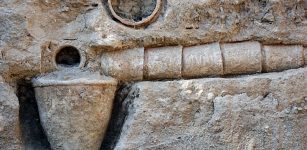 Ancient Aqueduct System Discovered In Boroujerd, Lorestan
News | Sep 16, 2015
Ancient Aqueduct System Discovered In Boroujerd, Lorestan
News | Sep 16, 2015 -
 The Indigenous Artists Keeping Ancient Rock Art Traditions Alive For Future Generations
Archaeology | Oct 3, 2024
The Indigenous Artists Keeping Ancient Rock Art Traditions Alive For Future Generations
Archaeology | Oct 3, 2024 -
 Algonquin People And The Myth Of The Medicine Woman In The Moon
Featured Stories | Feb 1, 2016
Algonquin People And The Myth Of The Medicine Woman In The Moon
Featured Stories | Feb 1, 2016 -
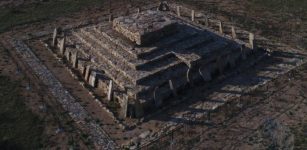 Intriguing 3,400-Year-Old Multipurpose Pyramid Found In Kazakhstan
Archaeology | Nov 2, 2023
Intriguing 3,400-Year-Old Multipurpose Pyramid Found In Kazakhstan
Archaeology | Nov 2, 2023 -
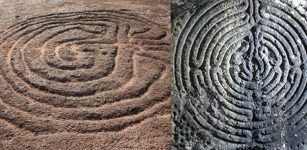 Intricate Mazes And Labyrinths: Mysterious Symbols Of Beauty And Confusion Or Communication Signals
Ancient Symbols | Jun 23, 2016
Intricate Mazes And Labyrinths: Mysterious Symbols Of Beauty And Confusion Or Communication Signals
Ancient Symbols | Jun 23, 2016 -
 Green Comet Last Seen By The Neanderthals 50,000 Years Ago May Be Visible To The Naked Eye This Week
Archaeoastronomy | Jan 9, 2023
Green Comet Last Seen By The Neanderthals 50,000 Years Ago May Be Visible To The Naked Eye This Week
Archaeoastronomy | Jan 9, 2023 -
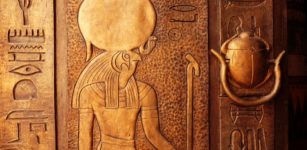 Sun God Ra Was Venerated In Every Age Of Ancient Egypt’s Long Dynastic History
Egyptian Mythology | May 3, 2021
Sun God Ra Was Venerated In Every Age Of Ancient Egypt’s Long Dynastic History
Egyptian Mythology | May 3, 2021 -
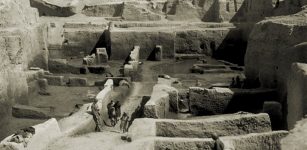 Iraq’s Ancient Kish City Survived The Great Flood – Today It’s Neglected And Lies Buried In Sand
Civilizations | Sep 24, 2015
Iraq’s Ancient Kish City Survived The Great Flood – Today It’s Neglected And Lies Buried In Sand
Civilizations | Sep 24, 2015 -
 Mystery Of Moses’ Double Mask, Dramatic Personality Change And The Hidden Prophet – What Did Really Happen On Mount Sinai?
Ancient Mysteries | Jun 25, 2018
Mystery Of Moses’ Double Mask, Dramatic Personality Change And The Hidden Prophet – What Did Really Happen On Mount Sinai?
Ancient Mysteries | Jun 25, 2018 -
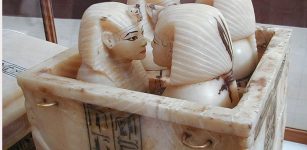 Canopic Jars: Funerary Tradition Of Ancient Egyptians And Their Beliefs In Afterlife
Ancient Traditions And Customs | Jun 23, 2017
Canopic Jars: Funerary Tradition Of Ancient Egyptians And Their Beliefs In Afterlife
Ancient Traditions And Customs | Jun 23, 2017 -
 We Dated A Sacred Aboriginal Women’s Site Used for Birthing Ceremonies And Discovered 7,000 Years Of Tool Making
Featured Stories | Jun 21, 2024
We Dated A Sacred Aboriginal Women’s Site Used for Birthing Ceremonies And Discovered 7,000 Years Of Tool Making
Featured Stories | Jun 21, 2024 -
 Beautiful Legends Of The Great Smoky Mountains: The Cherokee’s Little People Nunnehi And The Medicine Lake Ataga’hi
Myths & Legends | Jul 10, 2024
Beautiful Legends Of The Great Smoky Mountains: The Cherokee’s Little People Nunnehi And The Medicine Lake Ataga’hi
Myths & Legends | Jul 10, 2024 -
 Mysterious Moon-Eyed People – Ancient Subterranean Race In Conflict With The Cherokee
Featured Stories | Dec 28, 2017
Mysterious Moon-Eyed People – Ancient Subterranean Race In Conflict With The Cherokee
Featured Stories | Dec 28, 2017 -
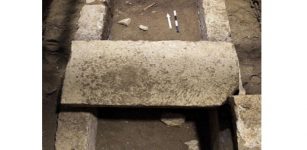 Mystery Greek tomb was dedicated to companion of Alexander – experts say
Civilizations | Oct 1, 2015
Mystery Greek tomb was dedicated to companion of Alexander – experts say
Civilizations | Oct 1, 2015 -
 Use Of Horses In the Bronze Age – New Facts
Archaeology | Jul 14, 2020
Use Of Horses In the Bronze Age – New Facts
Archaeology | Jul 14, 2020 -
 On This Day In History: Battle Of Visby, Gotland Was Fought – On July 27, 1361
News | Jul 27, 2016
On This Day In History: Battle Of Visby, Gotland Was Fought – On July 27, 1361
News | Jul 27, 2016 -
 Illapa: Powerful Master Of Clouds, Rain And Hail – Worshipped By Inca People
Featured Stories | Jul 7, 2016
Illapa: Powerful Master Of Clouds, Rain And Hail – Worshipped By Inca People
Featured Stories | Jul 7, 2016 -
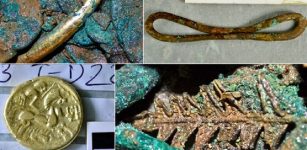 Remarkable Le Catillon II Hoard – World’s Largest Collection Of Celtic Coins And Jewellery
Archaeology | Nov 24, 2015
Remarkable Le Catillon II Hoard – World’s Largest Collection Of Celtic Coins And Jewellery
Archaeology | Nov 24, 2015 -
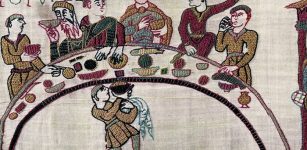 Bayeux Tapestry: Original Location Of Remarkable Romanesque Art – Finally Solved
Archaeology | Oct 26, 2019
Bayeux Tapestry: Original Location Of Remarkable Romanesque Art – Finally Solved
Archaeology | Oct 26, 2019

![Tiglath-Pileser III besieging a town named U[pa?], possibly in Turkey.](https://www.ancientpages.com/wp-content/uploads/2019/05/iglathPileser32.jpg)